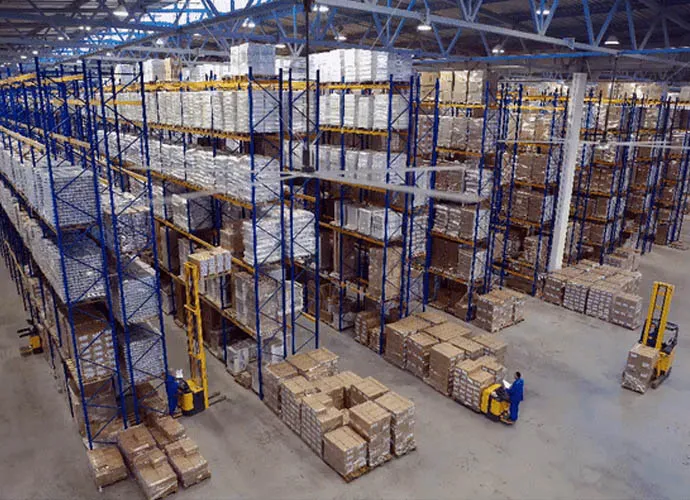Stuffy warehouses, hot gym rafters, and soaring energy bills drain profit and morale. Ignoring airflow only worsens those hot and cold spots. A high‑quality HVLS fan from a trusted fan manufacturer fixes it fast—lower temps, happier teams, lower costs.
The best HVLS ceiling fans in 2025 come from a handful of proven manufacturers that pair large diameter blades with direct drive motors. They move huge volumes of air for pennies a day, cutting energy bills 20‑40 % in factories and warehouses.

best HVLS ceiling fans
Large ceiling fans spin at low speed—often <70 RPM—yet shift a staggering amount of air. The secret is a large diameter blade (up to 24 feet) that keeps air circulation steady without drafts.
Bullet‑quick comparison
Quote from a facility engineer
“These fans are designed for industrial and commercial rooftops 30 ft high but run quieter than your home fridge.”
| Spec | Industrial Ceiling Fan | Commercial HVLS |
|---|---|---|
| Flow (CFM) | 20 000 | 220 000 |
| Noise (dB) | 70 | 45 |
| Payback | 3 yrs | 18 mo |
Explore the tech inside the M650 Series HVLS Fans—our flagship energy‑efficient line.
Fan manufacturers in 2025 fall into three tiers:
| Rank | Brand | Signature Model | Niche Strength |
|---|---|---|---|
| 1 | Vindus Fans | M750 | Low‑noise industrial hvls fan with direct drive motor |
| 2 | Big Ass Fans | Powerfoil X4 | Iconic for stadiums & large areas |
| 3 | Hunter Industrial | Titan | Energy‑efficient retrofit for 20‑ft rafters |
| 4 | Refresh Fans | R‑Series | Budget solution for large spaces |
| 5 | Breezetech | Delta‑24 | Smart control options + cloud analytics |
Need specifics? Our in‑house plant builds the best HVLS designs under ISO‑9001 for industrial spaces across five continents.
Learn more in our manufacturing solution overview.
A single 18‑foot HVLS ceiling fan destratifies up to 22 000 sq ft—spreading cool air in summer, recycling warm air in winter. This destratification halves heating costs and boosts productivity by reducing humidity and sweat.
Key benefits list
Check how warehouse HVLS fans optimize airflow and energy in distribution corridors.

HVLS Fans in large Warehouse
| Ceiling height | Recommended Diameter | Coverage | Fan Speed (RPM) |
|---|---|---|---|
| 8 ft | 8 ft | 5 000 ft² | 80 |
| 16 ft | 14 ft | 11 000 ft² | 65 |
| 24 ft | 20 ft | 18 000 ft² | 55 |
| 30 ft+ | 24 ft | 24 000 ft² | 50 |
Small fans struggle here; big HVLS fans thrive. Larger fans equal fewer units, lower install labor, and running cost < $1/day.
Big Ass Fans pioneered the category, but best HVLS fan performance now depends on motor torque, blade profile, and software.
| Feature | Big Ass Fans | Hunter Industrial | Vindus Fans |
|---|---|---|---|
| IoT Analytics | ✓ | ✓ | ✓✓ |
| Energy‑efficient Motor | PM | AC | Direct drive |
| Fan blades | 6 | 5 | 5 aero‑foil |
| Warranty | 15 yrs | 10 yrs | 15 yrs |
Industry insight
The global fan market shifts toward smart BMS connectivity where building management systems auto‑adjust fan speed to load and weather.
See how M750 Series HVLS Fans stack up in efficiency and performance.
Chart – 10‑Year Energy & Maintenance Cost

10‑Year Energy & Maintenance Cost
Results prove significant energy savings with HVLS: $8.5k vs. $48k over a decade.
Plus, easy to install kits mean downtime under 2 hours.
Modern commercial HVLS fans speak BACnet, Modbus, and cloud APIs. That means:
Our control options include adaptive cruise that trims RPM to maintain set airflow and target energy efficiency.

HVLS fan for commercial places
Site: 120 000 sq ft automotive press shop
Problem: 35 °C floor temps, condensate rust
Solution: Seven 22‑ft industrial ceiling fans with low‑speed fans algorithm
Outcome:
Full detail in commercial building success story.
How much volume of air does one HVLS fan move?
: Up to 260 000 CFM—perfect for large industrial sheds.
Will fans work with evaporative coolers?
: Yes, mixing improves pad efficiency by 15 % for cooling and ventilation.
What ceiling height is too low?
: Below 8 feet is tough; choose wall‑mounted commercial fan instead.
Do HVLS fans heat rooms in winter?
: They don’t create heat; they recirculate warm air, slashing heating and cooling costs.
Are they noisy?
: 40‑50 dB—quieter than office AC.
Contact the team behind these insights—your solution for large spaces starts with a quick airflow model today.
Ready to refresh your facility? Reach out for a no‑obligation design, and feel the breeze of smarter, greener comfort.

Hi, I’m Michael Danielsson, CEO of Vindus Fans, with over 15 years of experience in the engineering and design industry. I’m here to share what I’ve learned. If you have any questions, feel free to contact me at any time. Let’s grow together!